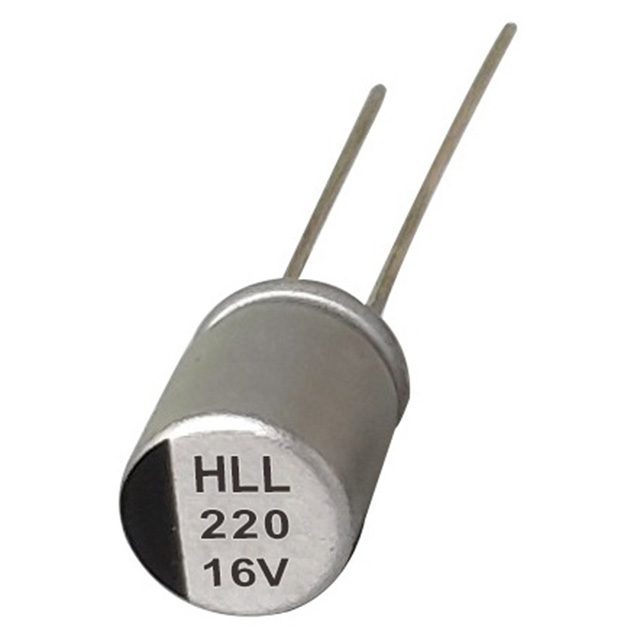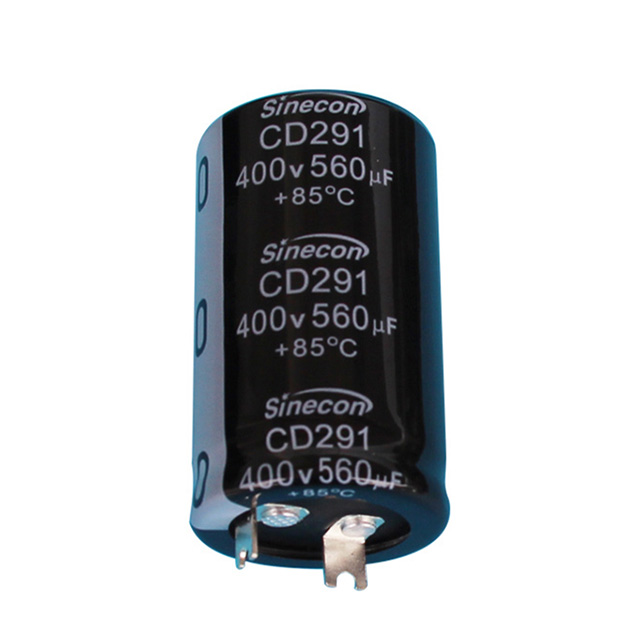The screw terminal design ensures a secure, robust electrical connection by using screws to fasten the wire leads tightly into place, thereby minimizing the risk of loose or intermittent connections that could otherwise lead to circuit failure. In a typical soldered or press-fit connection, the risk of poor contact, particularly in high-current applications or environments prone to vibration, is significant. Screw terminals, however, offer a mechanically stable connection that prevents the wire from loosening over time, even when subjected to vibrations or thermal expansion. The screw ensures consistent and uniform pressure, improving the contact area and ensuring a low-resistance, high-conductivity connection. This reliability is critical in high-power applications, where loose connections can lead to overheating, arcing, or even fire hazards. Moreover, the tightened screw connection maintains the capacitor’s electrical integrity and stability across a broad range of environmental conditions, including high temperatures and fluctuating humidity levels.
The design of the screw terminal interface significantly simplifies the installation process, especially in applications where quick or frequent installation and disconnection of components are required. Unlike soldered connections, which can require specialized tools, such as soldering irons, flux, and precise techniques, screw terminals only need basic tools such as a screwdriver. The simplicity and accessibility of installation reduce the likelihood of human error during setup, making it easier for operators, technicians, or engineers to perform installations or replacements efficiently. The easy-to-use interface is particularly beneficial in large-scale manufacturing or field service environments, where minimizing setup time is crucial to maintaining production schedules. Since screw terminals are universally understood and don’t require specialized training to use, they enable faster training times for staff, which is advantageous in high-turnover or fast-paced environments.
Screw terminals offer versatility when it comes to accommodating various wire gauges, providing users with the flexibility to choose wire sizes based on the specific needs of the application. This is especially important in power distribution and industrial circuits, where a range of wire thicknesses may be required depending on the current capacity and load handling. Screw terminals are capable of securely holding wires ranging from small gauge to heavy-duty cables without compromising the strength or reliability of the electrical connection. This flexibility allows for customized installations, as it is easier to switch wire types or sizes without requiring a complete redesign of the connection interface. Moreover, the ability to use thicker wires ensures lower resistance in high-power applications, contributing to better overall circuit performance. The adjustable nature of screw terminals makes them a suitable solution for applications that may need to scale or adjust over time, such as in power electronics or electric vehicles.
One of the key risks with poorly connected capacitors is the formation of high-resistance contacts that can lead to excessive heating. Such heating not only jeopardizes the capacitor’s integrity but also impacts other components in the circuit, potentially leading to premature failure. Screw terminal connections mitigate this issue by ensuring a tight and consistent connection that minimizes the chance of resistance build-up. The firm metal-to-metal contact created by the screw terminal is less prone to corrosion and oxidation compared to soldered joints, which are often vulnerable to degradation over time. Additionally, screw terminals can dissipate heat more efficiently, as they provide a solid connection that distributes the current evenly across the contact area. This heat management is particularly important in high-power applications where current surges or fluctuations are common, preventing damage to the capacitor and other components within the system.
The screw terminal design allows for easy maintenance and reusability in systems that require frequent updates or replacements of components. Unlike soldered connections, which often require desoldering and can cause damage to the leads or PCB, the screw terminal connection can be easily undone by loosening the screws. This allows for quick removal or replacement of the capacitor without needing to compromise the quality of the connection. Screw terminals allow the reinstallation of wires after maintenance, making them highly reusable and cost-effective for industries where equipment or components need to be regularly serviced or swapped out. The ability to disconnect and reconnect easily is particularly advantageous in applications where capacitors may need to be serviced or inspected regularly, reducing downtime and ensuring continuity in production. This reusability ensures that the capacitor or system remains adaptable, even in the face of changing operational demands or evolving technological standards.















